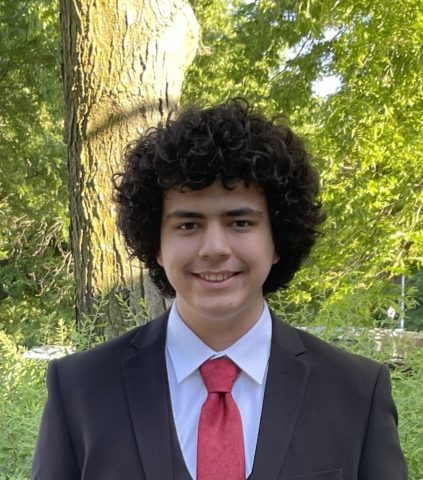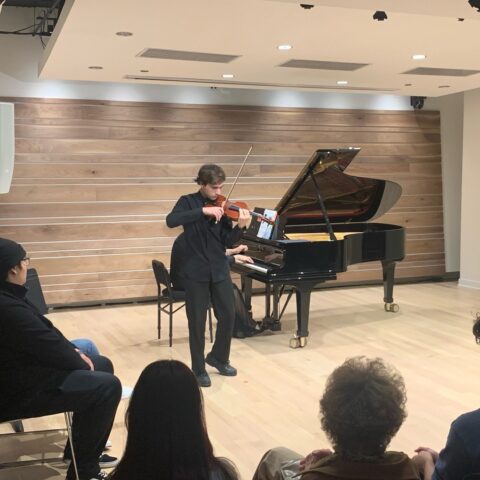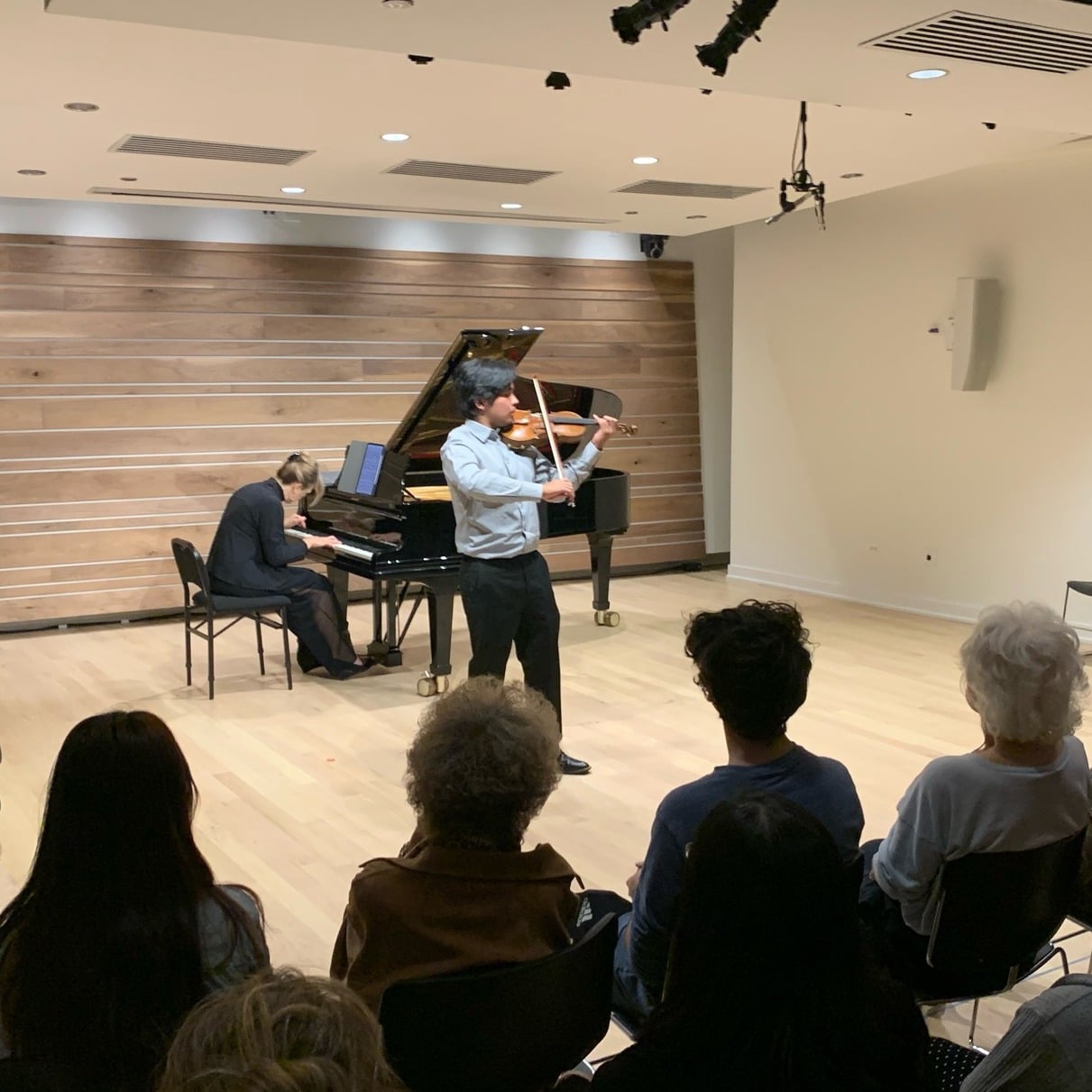Instruments are expensive. Really, extraordinarily expensive. This is especially true for string instruments, with instruments suitable for college study running a minimum of $10,000. For the most advanced students, the appropriate level instrument may range from $50,000 to more than $250,000. Add in accessories, bows, cases, reeds, maintenance, mallets, and other supplies, and the cost of instruments seems insurmountable.
For many families, obtaining the level of instrument their child requires is truly out of reach financially. Fortunately, there are a lot of options for obtaining an instrument even when you cannot afford one. This article will outline some of the possibilities.
Use Grants and Program Funds
All students in CMPI who commit to studying music at the college level midway through high school are entitled to a special stipend to help them purchase an instrument. While the amount is just a few thousand dollars, it can help substantially, especially in combination with other programs.

CMPI fellow Aleo Esparza was a 2023 Jack Kent Cooke Young Artist, and used his funds to purchase percussion instruments.
Additional grants are also available through other programs. A common one for classical musicians is the Jack Kent Cooke Young Artist Award, which grants up to $10,000 and can be used for instrument purchase, among other things. YoungArts also provides small, unlimited grants to qualified students.
Other grant and scholarship programs are available but vary widely depending on the age of the individual, level, and intent. Many are small but can become substantial when combined. You can search for scholarships and grants in the following locations:
- City or state-based grants and scholarships
- City, state, or national arts council grants
- Program-based grants and scholarships
- College scholarships databases
- Grant databases
Use Trade-in and Rental Credit
If you already have an instrument or are renting an instrument, you may be eligible to trade in your instrument or get credit for your rental from the shop you work with. These credits may be substantial, depending on the quality of the instrument you are trading in or the number of years you have rented.
It can be very useful to work with one shop from very early on to maximize these benefits. Quality shops often offer rental credit, full price trade-in credit for any instruments purchased from them, and similar benefits. Using these benefits can reduce purchase prices by $1000 or more.
In addition, do not forget that you can and should negotiate the price of any purchase or trade-in. List price is rarely what is charged.
Obtain a Loaner Instrument

CMPI fellow Sameer Agrawal playing his loaner instrument from the Guarneri Hall Junior Affiliate Artist program
It is common for talented players to receive instruments on loan for their use. Loans can vary from just a few weeks to several years. While many loan programs are designed for very advanced students, some will also loan instruments to young musicians who otherwise do not have access to them.
Many different programs exist. Here are just a few:
- Conservatories, Colleges, and Universities: Donors have been donating instruments or money for instruments to conservatories and universities for decades, and the practice has become even more commonplace recently. Most major conservatories and music schools have several instruments they are able to lend to students. While these instruments may not be available until you reach college level, they are occasionally available to pre-college students who have an association with a college or university. In some cases, standalone pre-college programs may have instruments available to loan as well.
- Country-Based or Local Programs: while more common in European and Asian countries, some countries or regions have lending programs for students who are either citizens or have heritage from specific countries. Canada, Singapore, and Taiwan are a few with amazing instrument collections.
- Shops and Luthiers: shops and luthiers (people who make instruments) often lend instruments to talented students, either for special events or on a longer-term basis. In some cases, a luthier will even make an instrument for a specific player.
- Charities, Foundations and Other Programs: the most common sources for loans come from charitable foundations and specific lending programs. These are just a few of many available:
- American Viola Society Viola Bank
- Anne Sophie Mutter Foundation
- Becker Family Foundation
- Carlsen Cello Foundation
- Guarneri Hall Junior Affiliate Artist Program
- The Maestro Foundation
- Nippon Music Foundation
- Rachel Barton Pine Foundation
- Stradivari Society
- Tarisio Trust Young Artists
- Virtu Foundation
Fundraise for Your Instrument
One of the most common methods of getting an instrument is to fundraise for it. While there are many different options available for fundraising – everything from convincing people to invest in you to asking Grandma for money – the most common one these days is to use a service like GoFundMe. Any student can set up a page at any time and raise money over a period of time for an instrument. See this recent article on several CMPI fellows who are fundraising for instruments.
What makes a successful fundraising page? Here are a few tips:
- Start early: start raising money as early as possible, preferably by the first year or two of high school. It can take a long time to raise funds.
- Be specific: let potential donors know exactly what you want and need and how much it will cost.
- Be compelling: include pictures, videos of your playing, and a compelling story of why you need the instrument.
- Keep it updated: provide periodic updates to keep the fundraising active.
- Share it widely: share your fundraising page with everyone you know and ask them to share it with their friends, families, and colleagues as well. Share it with your school, any music programs you participate in, and any other networks you might have, such as church or neighborhood networks.
One caveat: make sure you are aware of any tax implications or student financial implications when raising money in this way. The money can potentially make you ineligible for certain public benefits or could be counted as income for tax and financial aid purposes.
Find a Benefactor
While it might feel a bit like going back to the 18th or 19th century, many instruments, especially strings, are provided to artists today by benefactors. Basically, a wealthy individual owns or purchases an instrument and then chooses to provide it to an artist, either temporarily or permanently. Typically, you need to have some sort of reputation to find a benefactor willing to sponsor your career, but it is certainly possible, especially if students are willing to network and perform for corporate or wealthy donors.
Rare Violins of New York In Consortium is a matchmaking program that works to match artists with benefactors. Other shops and luthiers may work independently to match performers with benefactors.
A new option is Strumenti, a program that allows multiple individuals to invest in an instrument that is then provided to a young musician. It is kind of like a group matchmaking process to support young musicians. The instrument loans are expected to last 5-10 years, after which time the instrument is sold and the investors receive the profits.
The benefactor option has typically been reserved for top-level musicians; however, there is nothing stopping a player of any level from reaching out to find a potential benefactor. Asking your teacher, student navigator, mentor, and program can help you identify individuals who might be willing to support a young musician.
Win an Instrument in a Competition
This one is a bit tricky to achieve, but many major international competitions offer the loan of an instrument as part of the prize package. Loans may be of varying lengths, usually one to five years, and often are tied to a specific instrument. While difficult to achieve a competition win, some of the most beautiful instruments, especially for strings, are only offered in this manner.
Take Out a Loan
Obviously, if possible, families should avoid taking out loans. But many a family has financed an instrument by taking out a personal or home equity loan.
Some shops also offer financing of instruments. While this is unusual, it is worth asking about the possibility and the terms. Often, however, the terms are not favorable.
There are a few programs out there designed specifically for financing instruments. These are much more common in Europe than the United States, sadly.
Give it Time – And Expect Change
Funding an instrument or finding one on loan can take a very long time. In addition, a player’s needs typically will change over time. For example, an instrument may be available during college but expire upon graduation. Or a loan is only available for one or two years. For many musicians, finding and obtaining the perfect instrument is an ongoing, continual process throughout their entire careers.
Images
Andrei Nague and his loaner violin from the Guarneri Hall Junior Affiliate Artist program; Aleo Esparza; Sameer Agrawal and his loaner violin from the Guarneri Hall Junior Affiliate Artist program
